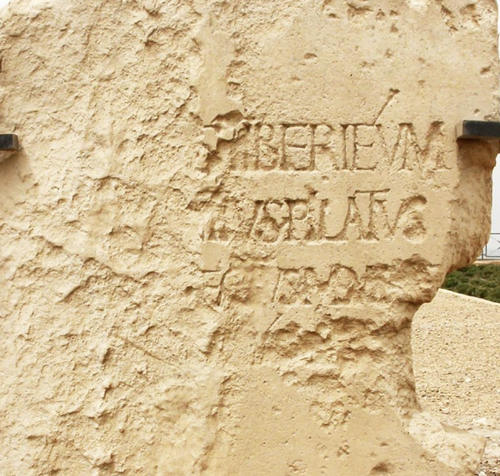We continue our focus on the week of weeks, leading up to the death and resurrection of Jesus Christ. Today, we focus on the evidence of Pontius Pilate.
Society has always questioned the Bible accounts from creation to revelation and Easter is no exception. The accuracy of the Bible also comes into much scrutiny since most of the events of the Bible happened thousands of years ago. We will readily accept Julius Caesar but struggle with Jesus and the events of Jesus’ life.
So why is the crucifixion of Jesus so important when at the time of Jesus’ death crucifixion was a regular occurrence? The people involved in Jesus’ crucifixion were Pontius Pilate, Caiaphas and Ossuary, bones, Gethsemane and Calvary. So let us glean facts. Below are the artefacts that archaeologists have found that put all of these findings at the right place and right time as described by the Bible.
Pontius Pilate
In 1961, a group of archaeologists, led by Dr. Antonio Frova were excavating an ancient Roman theatre near Caesarea Maritima. Caesarea was a leading city in the first century located on the Mediterranean Sea. A limestone block was found there with a surprising inscription. The inscription, on three lines, reads:
…]S TIBERIVM …PON]TIVS PILATVS …PRAEF]ECTVS IVDA[EA]
The inscription is believed to be part of a larger inscription dedicating a temple in Caesarea to the emperor Tiberius. The inscription clearly reads, “Pontius Pilate, Prefect of Judea.” The inscription is significant on several levels.

It makes sense for Pilate to be dedicating a temple in Caesarea Maritima. The prefect usually lived in Caesarea and only went to Jerusalem for special purposes. An inscription of Pilate found in Caesarea fits with the first-century world described in the Bible.
The dating of the inscription, in connection with its mention of Tiberius (42 BC-37 AD) places the governor Pontus Pilate at the same place and time as the Bible’s information about Jesus.
The vast significance of the Pilate Inscription is attached to the significance of the crucifixion of Jesus.
- The inscription does not prove the conversations between Pilate and Jesus.
- The inscription does not prove Pilate condemned Jesus to be crucified.
- The inscription does not prove the forgiveness of mankind’s sin through the death of Christ.
- The inscription does, however, put one of the central characters of the Easter story at the right place and right time as described by the Bible.
If you release this man, you are not Caesar’s friend. Everyone who makes himself a king opposes Caesar
John 19:12
Pontus Pilate eventually gives in and agrees to have Jesus crucified. There are also two more pieces of evidence outside the Bible that are worthy of note.
Tacitus – The Annals – Book 15: He wrote at the time when Nero set fire to Rome and blamed it on Christians. This is what he says:
Consequently, to get rid of the report, Nero fastened the guilt and inflicted the most exquisite tortures on a class hated for their abominations, called Christians by the populace. Christus, from whom the name had its origin, suffered the extreme penalty during the reign of Tiberius at the hands of one of our procurators, Pontius Pilatus.
Then there is Josephus the Jewish historian (Antiquities of the Jews, Book 18: 63-64) who wrote.
Now, there was about this time Jesus, a wise man, if it is lawful to call him a man, for he was a doer of wonderful works – a teacher of such men as receive the truth with pleasure. He drew over to him both many of the Jews and many of the Gentiles. He was [the] Christ; and when Pilate, at the suggestion of the principal men amongst us, had condemned him to the cross, those that loved him at the first did not forsake him, for he appeared to them alive again the third day.
These two people were not Christians, yet they support the evidence that Jesus not only existed but that he was crucified. The evidence for me is clear. Pilate had Jesus killed on a cross.
Tomorrow we examine further
Stay safe and blessed


Join the discussion One Comment